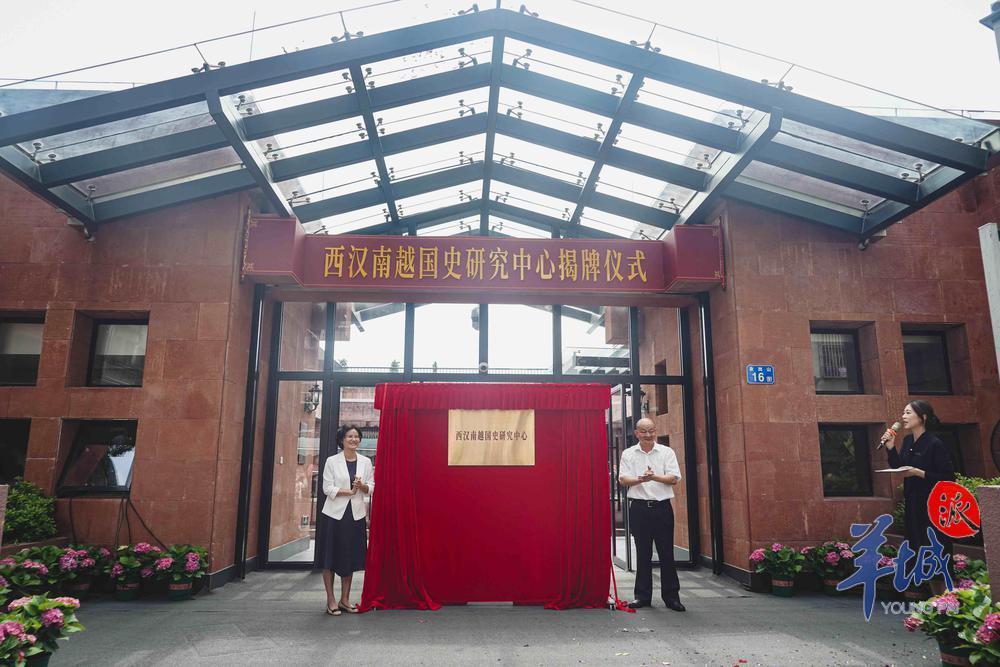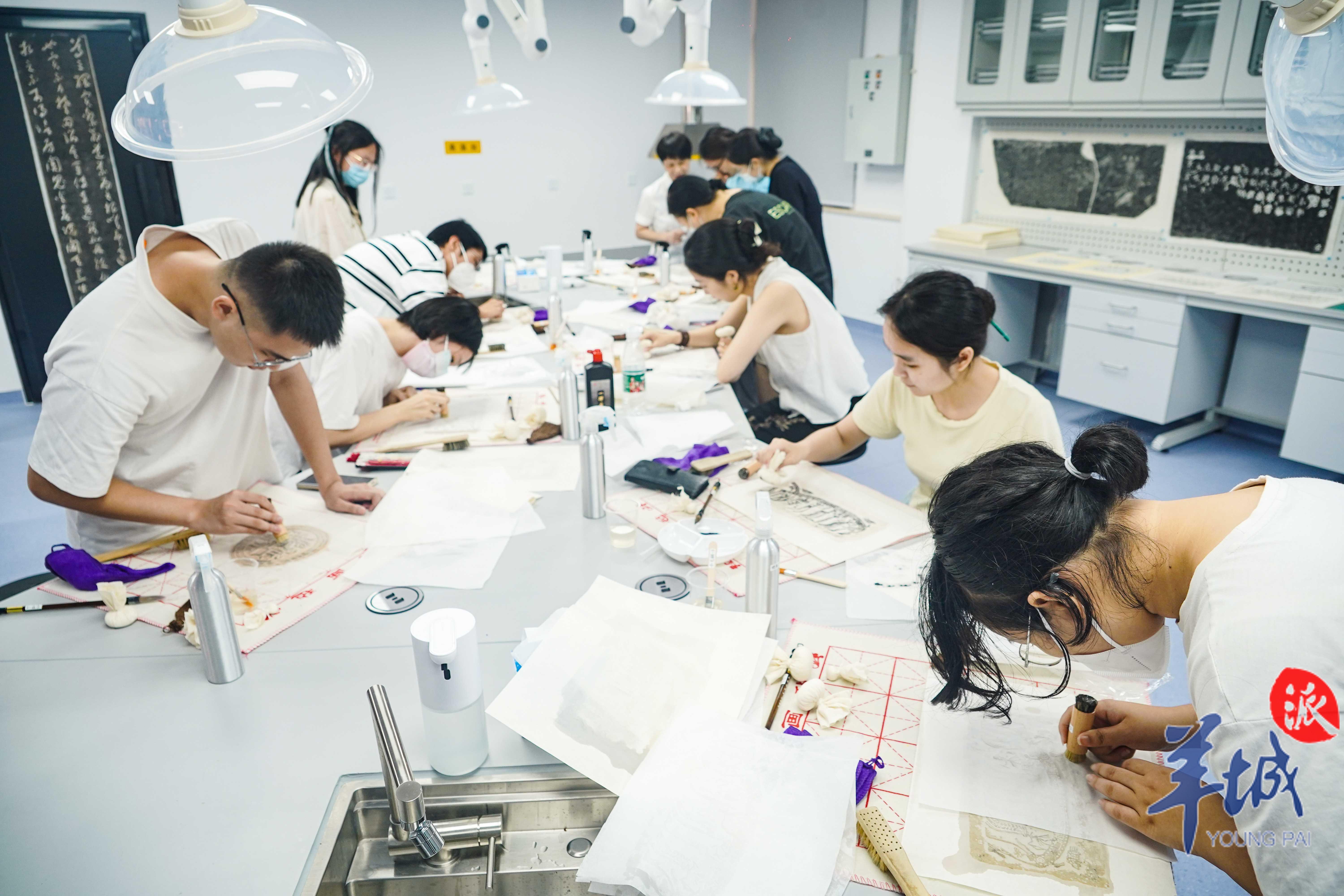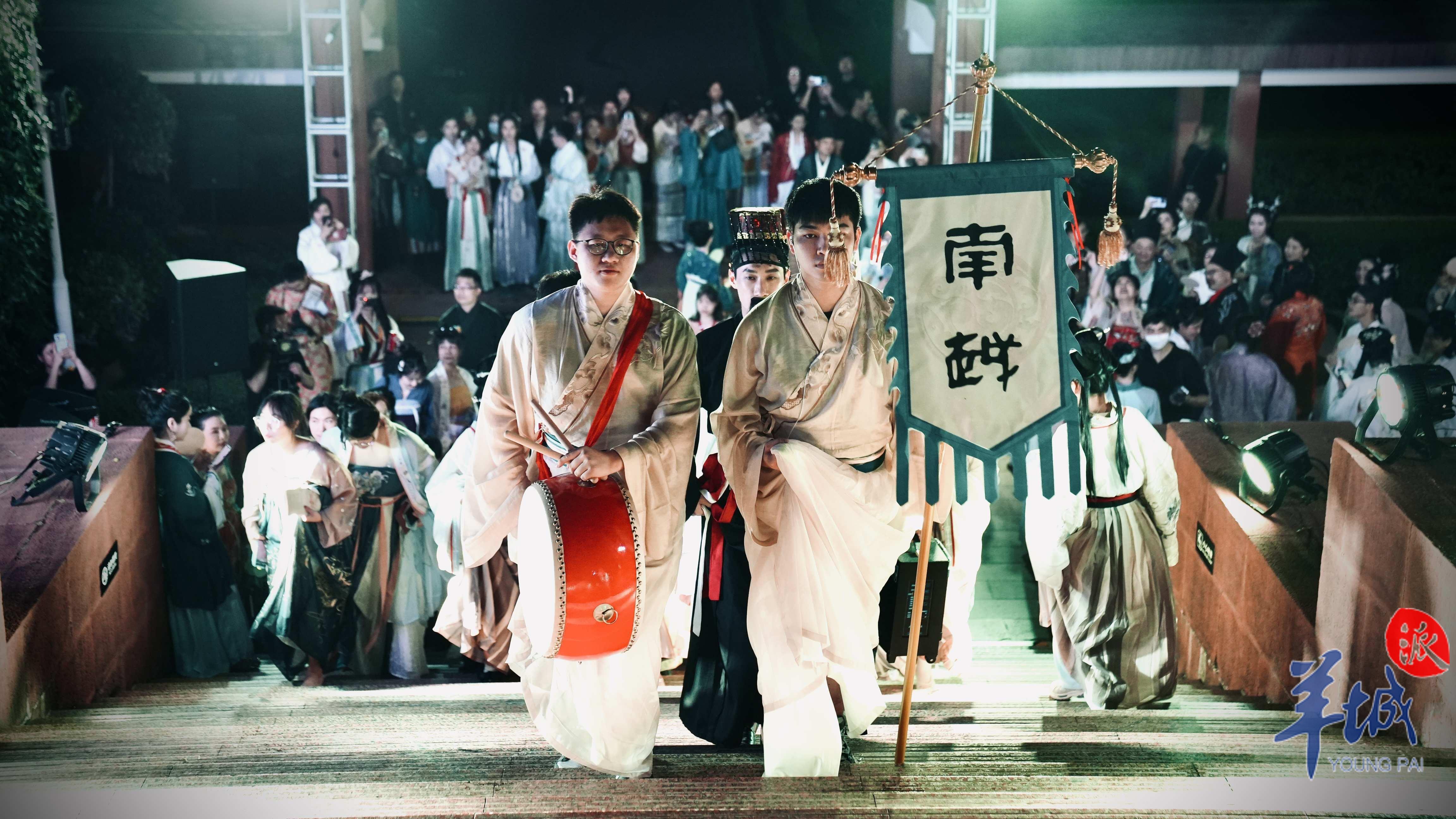June 9th of 2023 marked the 40th anniversary of the discovery and excavation of the tomb of King Wen of Nanyue. On that day, the History Research Center of the Museum of the Western Han Dynasty Mausoleum of the Nanyue King was unveiled in the tomb exhibition area of the Museum of the Mausoleum of Nanyue King.

After nine years of construction, the tomb exhibition area of the Nanyue King Mausoleum has finally finished its fifth part - the History Research Center of the Museum of the Western Han Dynasty Mausoleum of the Nanyue King.
Forty years ago, the tomb of King Wen of Nanyue, located on Xianggang Mountain in Guangzhou, emerged from obscurity. Leveraging the significance of the tomb, the Museum of the Mausoleum of Nanyue King (previously known as the Museum of the Nanyue King) was established on the original site.

In 1988, the comprehensive exhibition building of the museum was completed and opened to the public. In 1993, with the completion of the main exhibition building, the museum was established.
"Centered on the tomb, the tomb exhibition area is divided into five major parts – the tomb conservation area, exhibition area, supporting service area, cultural relic storage area, and the History Research Center. While the other four areas have been in use for many years, the research center was an important facility waiting to be completed," said Li Minyong from the Museum of the Mausoleum of Nanyue King. He added that the construction of the research center began in 2014 and took nine years to complete.
The design of the research center drew inspiration from topographic data of Xianggang Mountain in the 1950s and 1960s, incorporating earth covering and landscaping to restore the natural appearance of the mountain.

The research center is a semi-underground structure, following the traditional Chinese courtyard layout . Its exterior features red sandstone decoration and a glass grating, harmonizing with the existing architectural style.
The research center has a total floor area of 3,315 square meters, consisting of functional spaces such as a comprehensive laboratory for the protection of collections, a library and reading room for books and materials, an educational experiential space, and an academic lecture hall.
The comprehensive laboratory for the protection of collections encompasses several key functional spaces, including a photography and drawing room, restoration room, and a small vault.
The restoration room preserves and restores seven categories of cultural relics: metal, ceramics, stone, textiles, paper-based artworks, murals, and lacquerware.
Upon its inauguration, the laboratory carries out two tasks: firstly, carrying out cultural relic preservation, preventive conservation, and research analysis; secondly, organizing hands-on workshops for papermaking, natural dyeing, and glass craftsmanship , as well as thematic research and educational activities related to curation, storage, and restoration.
In order to support the Maritime Silk Road to enter the World Cultural Heritage List , the museum has launched an experiential activity - "Vanished Silver Box - Maritime Silk Road Themed Experience Space" within the research center.
This space offers the popular activity of live action role playing among teenagers with a focus on the Maritime Silk Road. It includes areas for popular science education on the Maritime Silk Road, an exhibition zone for the silver boxes, and a precious artifacts area.
Relying on the talent pool of the Museum of the Mausoleum of Nanyue King, the research center serves as an academic platform that integrates professionalism, openness, and comprehensiveness, with a focus on specialized research on the history of the Nanyue Kingdom.
Following the unveiling of the research center, the museum will intensify its research efforts in the fields of Qin and Han history, the history of the Nanyue Kingdom, Lingnan culture, and Maritime Silk Road culture. It aims to establish itself as a center for researching and showcasing the history of the Nanyue Kingdom, promoting the study and inheritance of the historical and cultural heritage of the Lingnan region.
To commemorate the 40th anniversary of the discovery and excavation of the tomb of King Wen of Nanyue, the museum held an evening event on June 9th, titled "A Night of Museum Wonders: Journey Back to Nanyue Kingdom."
南越王博物院王墓展区拼好第5块“拼图”
今年6月9日是南越文王墓发现发掘40周年纪念日。当天,位于南越王博物院王墓展区内的西汉南越国史研究中心正式揭牌。
历时9年后,南越王博物院王墓展区终于正式拼好第5块“拼图”——西汉南越国史研究中心。
40年前,位于广州象岗山上的南越文王墓重现人间。依托于南越文王墓,一个建在原址上的西汉南越王博物馆(南越王博物院前身)拔地而起。
1988年,该馆的综合陈列楼竣工,博物馆对外开放;1993年,随着主体陈列楼的落成,博物馆终于全面建成。
“王墓展区的规划设计以古墓为中心,根据规划分为古墓保护区、陈列展览区、配套服务区、文物仓库区和西汉南越国史研究中心五大部分。其中四大区域已投入使用多年,西汉南越国史研究中心则是亟待补充的重要设施。”南越王博物院李民涌介绍,该研究中心自2014年开工,共历时9年建成。
该研究中心整体设计参考象岗山20世纪五六十年代地形地貌资料,在新建建筑上覆土绿化,恢复象岗山山体风貌。
研究中心为半地下建筑,采用中国传统四合院平面布局;建筑外观主要采用红砂岩装饰,设计有光棚,与原有建筑风格协调一致。
据介绍,西汉南越国史研究中心总建筑面积为3315平方米,内设藏品保护综合实验室、图书资料库房与阅览室、教育体验空间、学术报告厅等功能空间。
藏品保护综合实验室设有摄影绘图室、修复室、小型金库等几个主要功能空间。
其中,修复室旨在对金属、陶瓷、石质、纺织品、纸张书画、壁画和漆木器7类文物进行保护修复操作。
在投入使用后,该实验室实行双线并进:一是开展文物保护修复、预防性保护以及文物研究分析;二是开展造纸、草木染、灯工玻璃的手工艺工作坊和策展、保管、修复等主题研学活动。
为助力“海丝”申报世界文化遗产工作,南越王博物院还在该研究中心精心打造“消失的银盒——海丝主题体验空间”。
该空间结合当下青少年喜欢的“剧本杀”策划主题体验活动,设置了海丝科普区、银盒展示区以及珍宝区。
西汉南越国史研究中心依托南越王博物院人才队伍,以南越国史专题研究为学术支撑,是集专业性、开放性、综合性于一体的研究平台。
研究中心揭牌后,南越王博物院将加大对秦汉历史、南越国史、岭南文化、海丝文化等相关领域研究,将其打造成国内研究、展示南越国历史的中心,推动岭南地区历史文化研究和传承。
为纪念南越文王墓发现发掘40周年,南越王博物院于6月9日晚举办了“博物馆奇妙夜之梦回南越”夜场活动。
文|羊城晚报全媒体记者 黄宙辉 通讯员 南越王宣
图|羊城晚报全媒体记者 贺全胜(除署名外)
翻译|刘佳慧
责编 | 王楠









